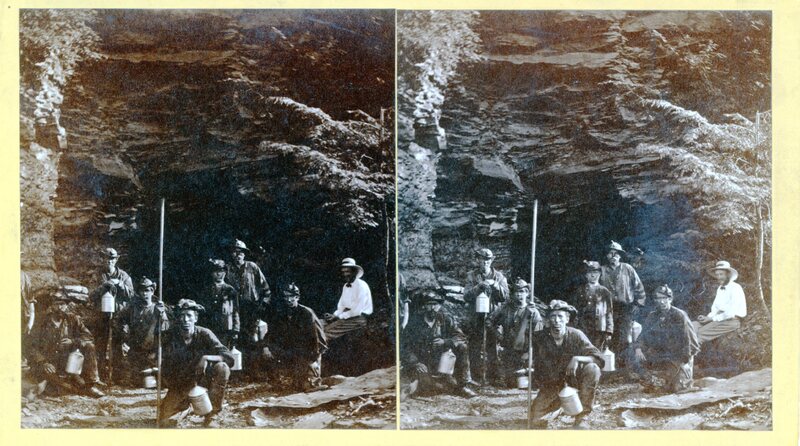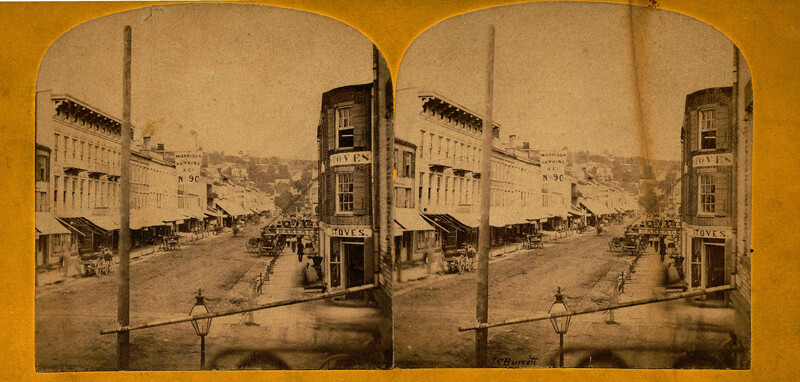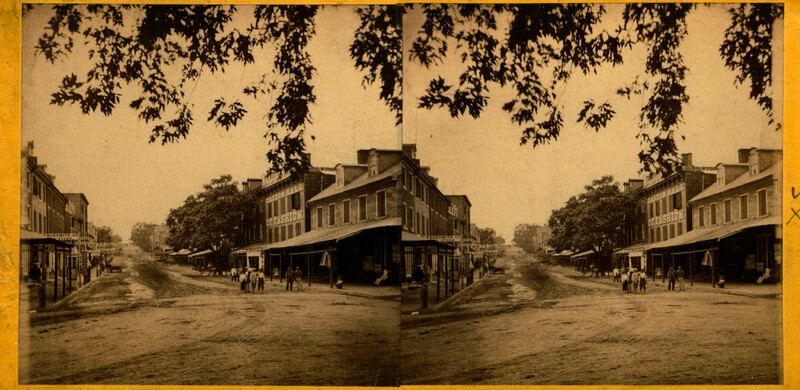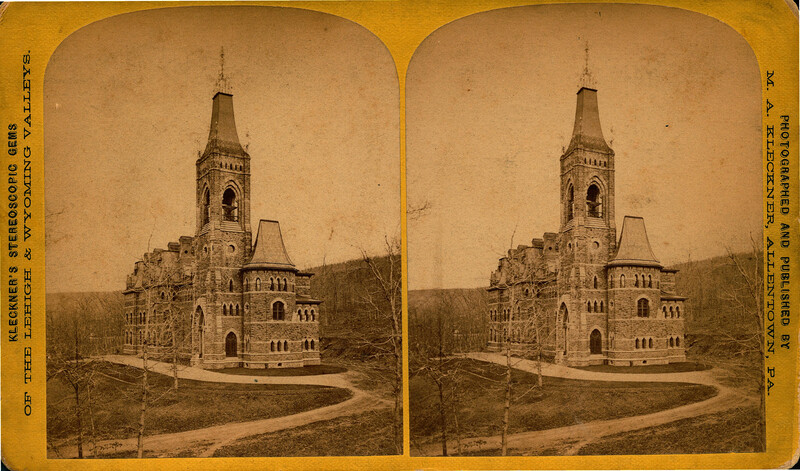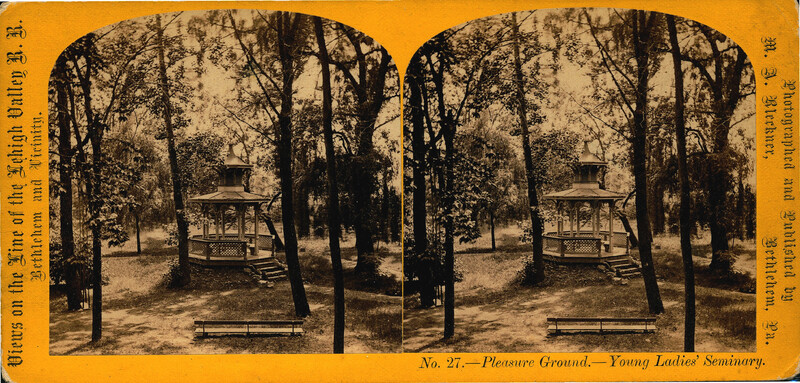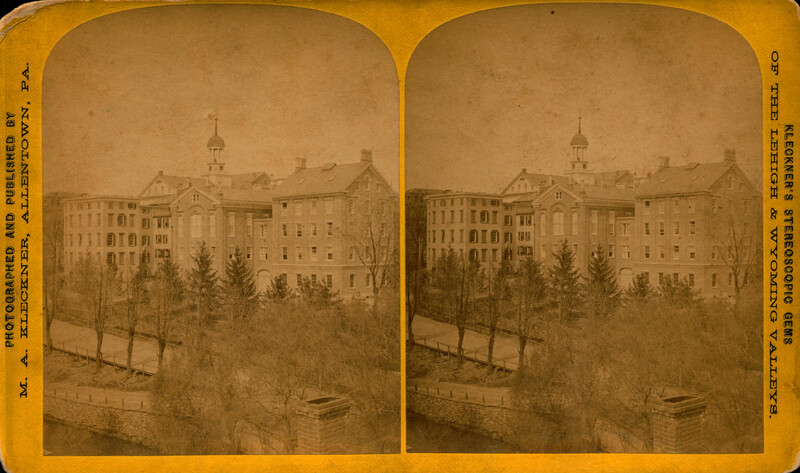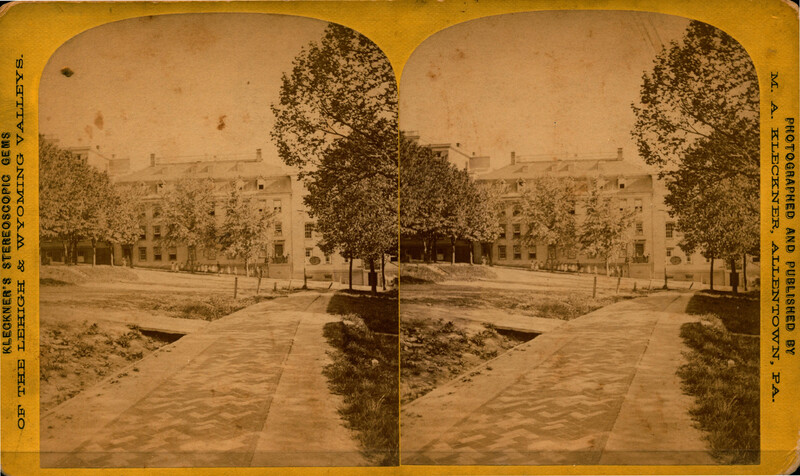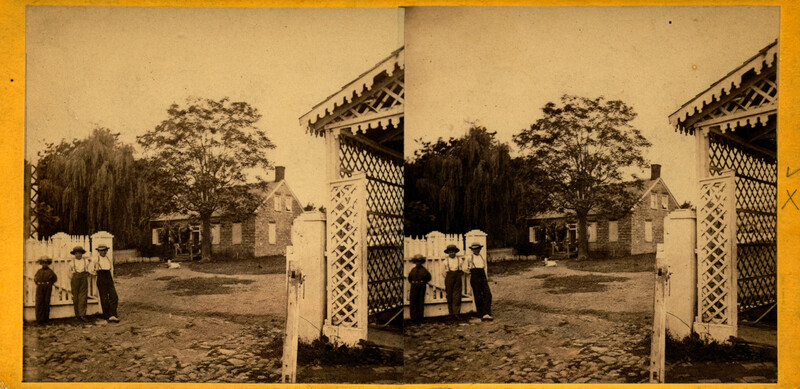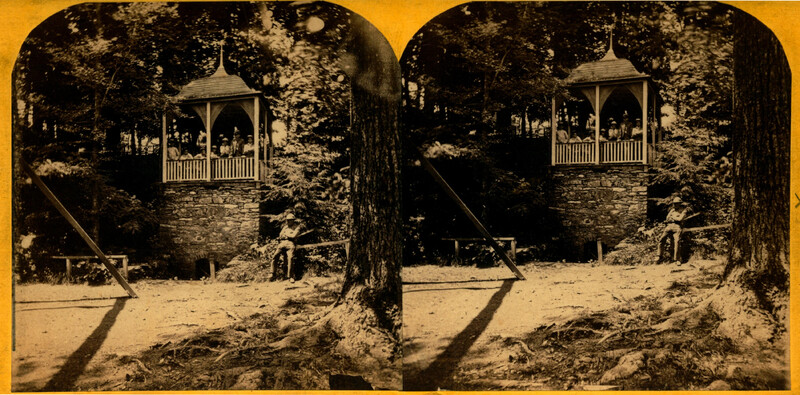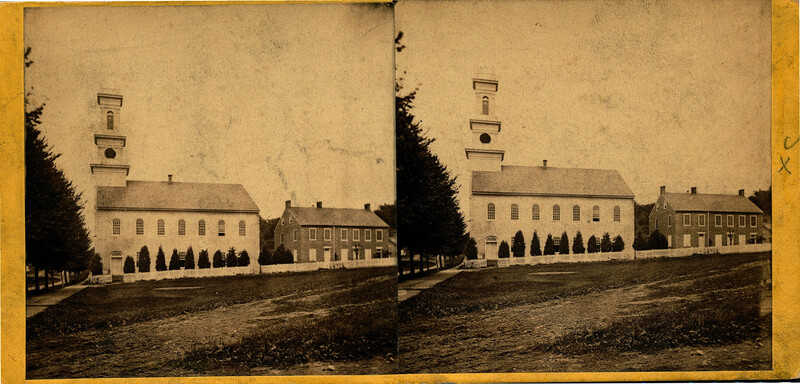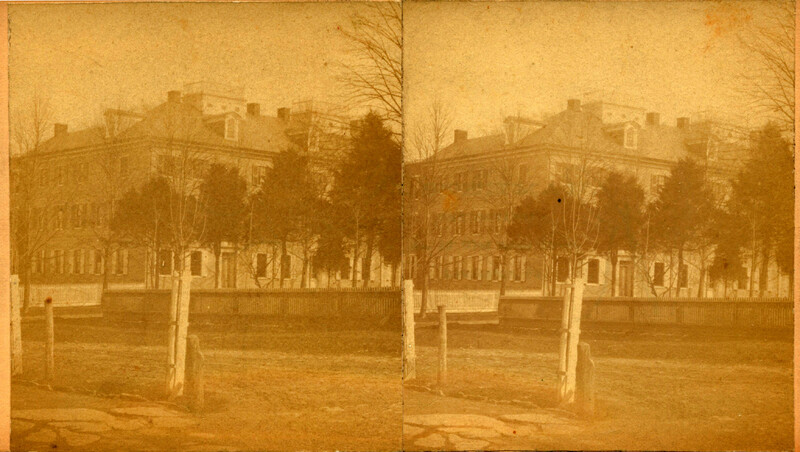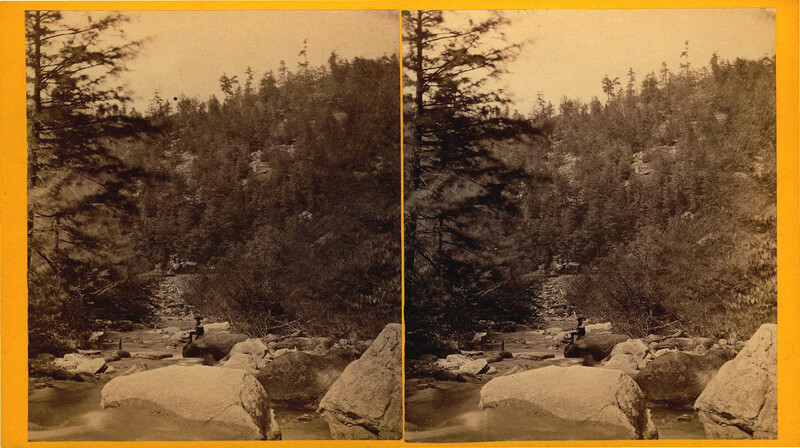Historic Stereographs
Stereoscopic photographic views (stereographs) were immensely popular in the United States and Europe from about the mid-1850s through the early years of the 20th century. The production of the stereograph entailed making two images of the same subject, usually with a camera with two lenses placed 2.5 inches (6 cm) apart to simulate the position of the human eyes, and then mounting the positive prints side by side laterally on a stiff backing.
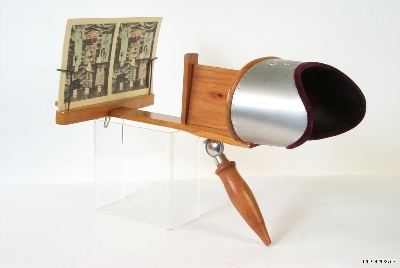
A stereoscope is used to view the finished stereograph. The stereoscope has two eye pieces through which the laterally mounted images, placed in a holder in front of the lenses, are viewed. The two images are brought together by the effort of the human brain to create an illusion of three-dimensionality.
-
Group of Coal MinersA group of coal miners posing in front of the mine in the Wyoming Valley. From Views Along the Line of the Lehigh Valley Railroad.
-
Street ViewAn unidentified street, possibly in Easton, Pa.
-
Northampton Street, EastonA view looking west up Northampton Street in Easton, Pa.
-
Lehigh UniversityLehigh University's Packer Hall in Bethlehem, Pa.
-
Pleasure Ground - Young Ladies' SeminaryA gazebo and park behind the Young Ladies' Seminary.
-
Moravian Seminary for Young LadiesThe Moravian Seminary and Central Moravian Church in Bethlehem, Pa.
-
Moravian Seminary for Young LadiesThe Young Ladies' Seminary in Bethlehem, Pa.
-
Nazareth Hall, NazarethThree students outside of a dormitory in Nazareth, Pa.
-
Nazareth Hall, NazarethAn arbor at Nazareth Hall in Nazareth, Pa.
-
Nazareth Hall, NazarethThe Nazareth Town School Building.
-
Linden Hall SeminaryLinden Hall Seminary in Lititz, Pa.
-
Stony CreekThe Stony Creek.
